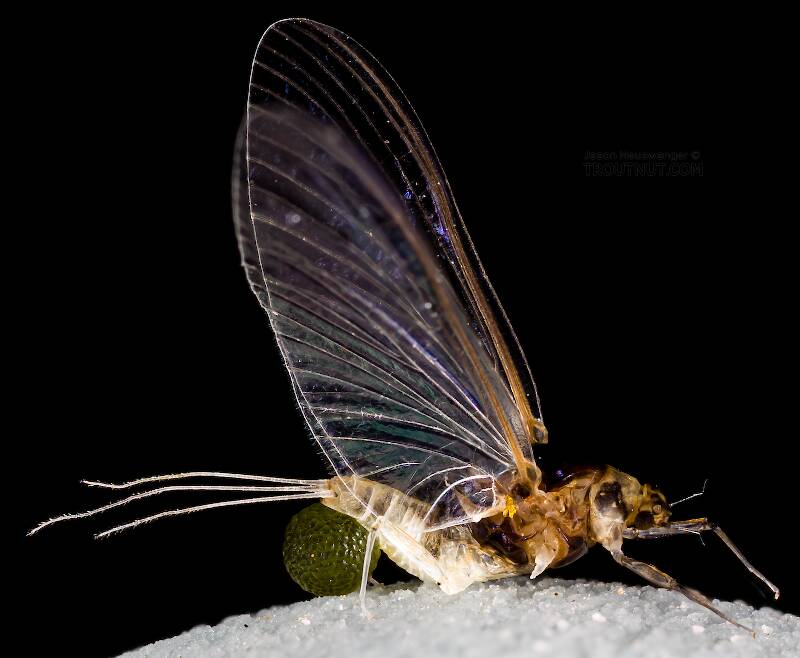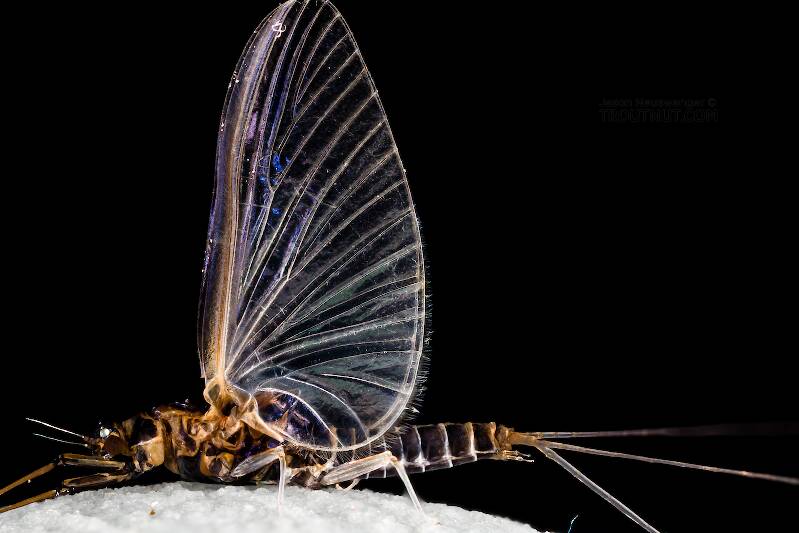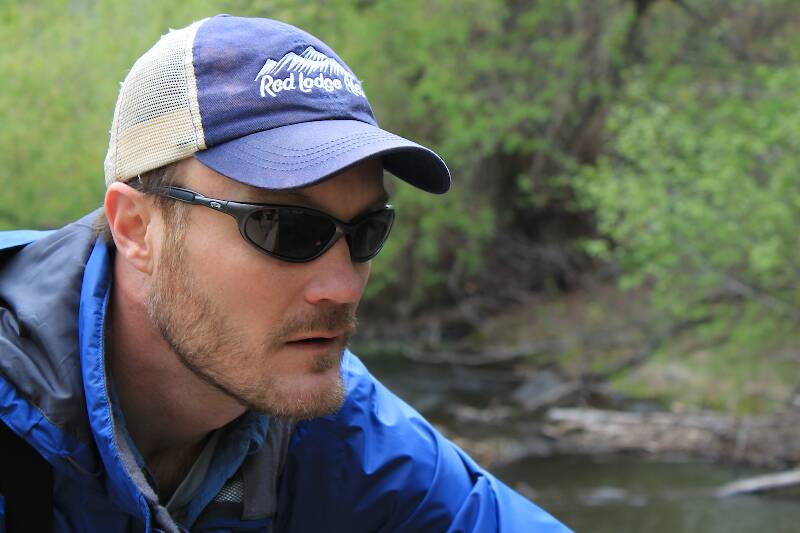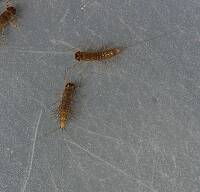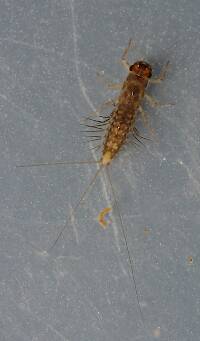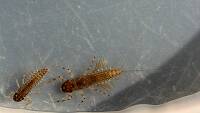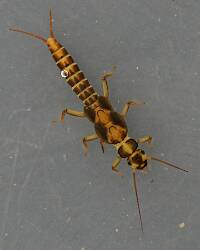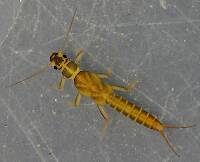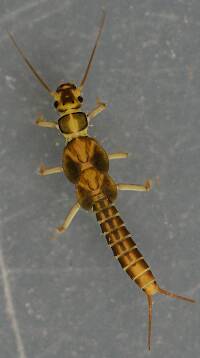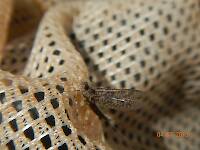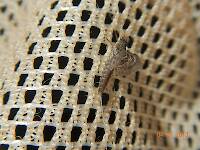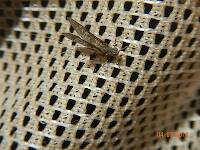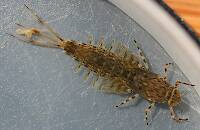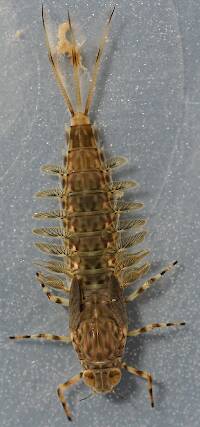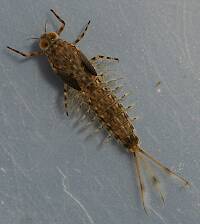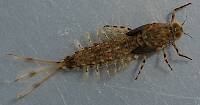
Hex Mayflies
Hexagenia limbata
The famous nocturnal Hex hatch of the Midwest (and a few other lucky locations) stirs to the surface mythically large brown trout that only touch streamers for the rest of the year.
Featured on the forum

As far as I can tell, this species has only previously been reported from one site in Oregon along the Columbia gorge. However, the key characteristics are fairly unmistakable in all except for one minor detail:
— 4 small yellow spots on frons visible in photos
— Narrow occipital spinule row curves forward (but doesn’t quite meet on stem of ecdysial suture, as it's supposed to in this species)
— Short spinules on anterior margin of front legs
— Short rposterior row of blunt spinules on abdominal tergae, rather than elongated spinules dorsally
I caught several of these mature nymphs in the fishless, tiny headwaters of a creek high in the Wenatchee Mountains.
— 4 small yellow spots on frons visible in photos
— Narrow occipital spinule row curves forward (but doesn’t quite meet on stem of ecdysial suture, as it's supposed to in this species)
— Short spinules on anterior margin of front legs
— Short rposterior row of blunt spinules on abdominal tergae, rather than elongated spinules dorsally
I caught several of these mature nymphs in the fishless, tiny headwaters of a creek high in the Wenatchee Mountains.

Troutnut is a project started in 2003 by salmonid ecologist Jason "Troutnut" Neuswanger to help anglers and
fly tyers unabashedly embrace the entomological side of the sport. Learn more about Troutnut or
support the project for an enhanced experience here.
This topic is about the Mayfly Genus Tricorythodes
A cult following is something to which few insects can lay claim, but the tiny Tricorythodes mayflies certainly qualify. Their widespread, reliable, heavy hatches draw impressive rises of ultra-selective trout which demand the most of a technical dry-fly angler's skills.It is surprising that such a great hatch took so long to come to the attention of fly fishermen. The Tricos were first introduced to anglers in a 1969 Outdoor Life article by Vincent Marinaro, who misidentified them as Caenis. By the early 1970s the identification had been corrected but Swisher and Richards still wrote in Selective Trout, "Few anglers are familiar with these extremely small but important mayflies." The next wave of publications boosted Tricorythodes to its current fame. I suspect their early dismissal was due in part to tackle limitations; anglers in the 1950s had no means to effectively tie and present size 22-28 flies.
Example specimens
Lastchance on Jul 2, 2011July 2nd, 2011, 2:40 pm EDT
Do they attach themselves in the silt near the shore? I'd like to study a few of them.
Thanks,
Bruce
Thanks,
Bruce
Konchu on Jul 2, 2011July 2nd, 2011, 4:25 pm EDT
I have found them among rocks where there's some flow in the stream, but theres often a fair amount of silt in with them. Doesn't mean they're not where you suggested--just my experience.
Spinnerfall on Jul 9, 2011July 9th, 2011, 9:38 pm EDT
Informative. Thanks Konchu!
Entoman on Jul 10, 2011July 10th, 2011, 9:41 am EDT
Hi Tim,
I've also found them at the bases of rooted weeds in the silt, and in the weeds themselves as they stage for hatching.
Regards,
Kurt
I've also found them at the bases of rooted weeds in the silt, and in the weeds themselves as they stage for hatching.
Regards,
Kurt
"It's not that I find fishing so important, it's just that I find all other endeavors of Man equally unimportant... And not nearly as much fun!" Robert Traver, Anatomy of a Fisherman
Quick Reply
Related Discussions
Topic
Replies
Last Reply
13
Sep 2, 2008
by Martinlf
by Martinlf
6
Aug 21, 2010
by Gutcutter
by Gutcutter
8
Jul 26, 2016
by Oldredbarn
by Oldredbarn


